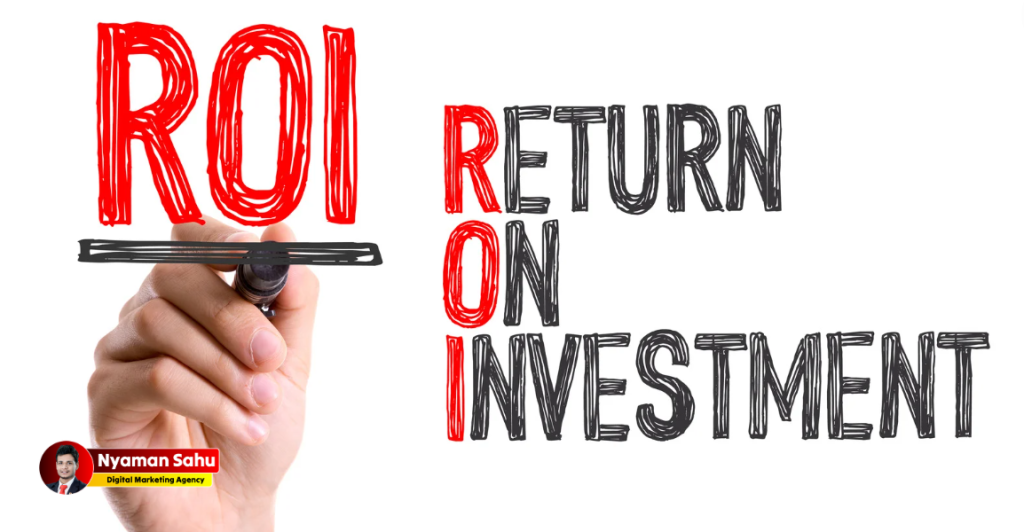In the world of digital marketing, results are king. You pour your time, effort, and budget into crafting campaigns, but how do you know if they’re actually paying off? Here’s where ROI (Return on Investment) comes in. ROI is a metric that helps you understand the financial effectiveness of your marketing efforts. It essentially tells you how much revenue you’re generating for every dollar you spend.
So, how do you measure the ROI of your digital marketing campaigns? Here’s a breakdown:

1. Choosing the Right Metrics:
Picking the right metrics depends on your campaign goals. Are you aiming for brand awareness, website traffic, lead generation, or sales? Here are some common metrics to consider:
- Website Traffic: This refers to the total number of visitors your website receives. Traffic can be a good indicator of overall campaign reach.
- Lead Generation: This measures the number of potential customers who have shown interest in your product or service, typically by signing up for a newsletter, downloading an ebook, or requesting a quote.
- Conversion Rate: This is the percentage of website visitors who take a desired action, such as making a purchase or signing up for a free trial.
- Sales Revenue: This is the total amount of revenue generated from your marketing campaigns.
2. Calculating Your ROI:
Once you’ve identified your key metrics, it’s time to crunch the numbers. Here’s the basic ROI formula:
ROI = (Net Profit / Total Cost) x 100
- Net Profit: This is the revenue generated by your campaign minus any associated costs, such as ad spend, content creation, or software fees.
- Total Cost: This is the total amount you invested in your marketing campaign.
3. Making Sense of Your ROI:
A positive ROI indicates that your campaign is generating a return on your investment. A negative ROI means you’re spending more than you’re earning. However, ROI interpretation can be nuanced. Here are some additional factors to consider:
- Campaign Lifetime Value: Some marketing efforts, like brand awareness campaigns, may not generate immediate sales but can have a long-term impact on customer acquisition. Consider the potential long-term benefits of your campaign when evaluating ROI.
- Customer Lifetime Value: A customer’s value extends beyond a single purchase. Consider the potential for repeat business and increased customer lifetime value when assessing ROI.
4. Tips for Improving Your ROI:
Here are some ways to optimize your campaigns for a better return:
- Set SMART Goals: Clearly define your marketing goals using the SMART framework (Specific, Measurable, Achievable, Relevant, and Time-bound). This will help you track progress and measure ROI effectively.
- Target the Right Audience: Focus your marketing efforts on reaching the people most likely to be interested in your products or services.
- A/B Testing: Test different variations of your marketing campaigns to see what resonates best with your audience. This can help you optimize your campaigns for better results.
- Track and Analyze Data: Continuously monitor your campaign performance and analyze the data you collect. This will help you identify areas for improvement and optimize your ROI over time.
By implementing these strategies, you can gain valuable insights into the effectiveness of your digital marketing efforts. Remember, ROI is an ongoing process, not a one-time calculation. By consistently measuring and improving your campaigns, you can ensure your marketing dollars are working hard for you.tunesharemore_vert



